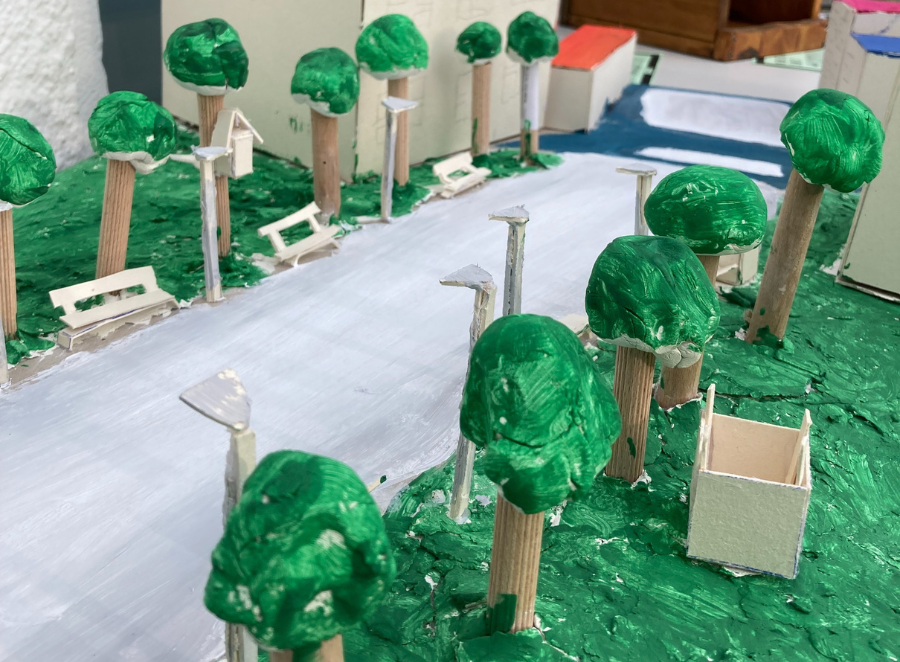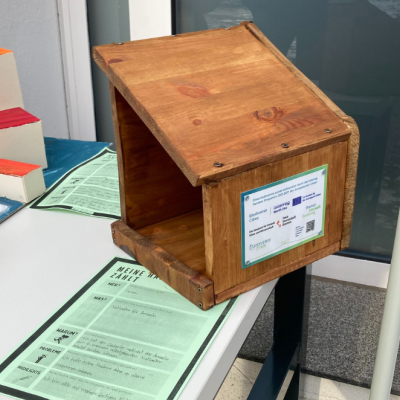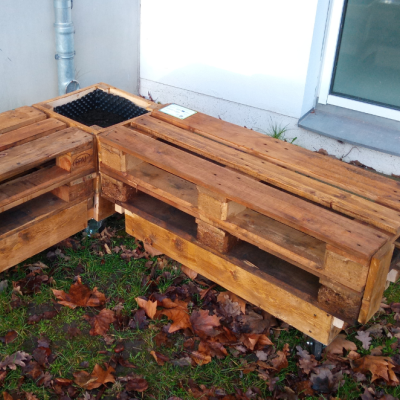Biodiverse Cities connects people to nature and nature to people. Employing co-creation approaches such as participatory methods of urban development can effectively incorporate public desires and needs for recreation, nature and leisure into urban planning. Similarly, citizen science initiatives can enhance people’s connection to nature. Bremen, a Biodiverse Cities Pilot City Partner, successfully combined the two approaches into a social pilot for school children, with great outcomes.
Authors: Marius Wittmann (SUKW), Sol Gustafsson & Caitlin Ball (Bax)
During the winter of 2023/2024 Biodiverse Cities Bremen (SUKW & BUB) in collaboration with the Secondary School Gröpelingen (Neue Oberschule Gröpelingen, NOG), developed a framework to educate pupils on climate change and biodiversity loss, empowering them to take action towards a better future. The framework can be divided into a three-step concept which consists of a BioBlitz (citizen science approach), Dialogue Mapping (co-creation approach) and DIY Mobile Green Events (spatial experimentation). The intention was to combine the Biodiverse Cities local planning and the joint biodiverse nature-based solutions (Bio-NBS) development with NOG’s curriculum on “Climate – I Am Changing”.
Phase 1 – BioBlitz Lindenhof
The cooperation began with the BioBlitz in the pilot area of Lindenhof in Bremen-Gröpelingen. Over the course of two weeks in October 2023, pupils and teachers took pictures of the urban nature at the Bürgermeister-Ehlers-Platz, which they uploaded to the iNaturalist app. Approximately 50 school children contributed with 220 observations registered on iNaturalist, out of which 42 observations were reviewed as adding “scientific quality”. While the findings may not be groundbreaking, documenting species like firebugs and Asian and European ladybugs paints a vivid picture of urban biodiversity, crucial for Biodiverse Cities Bremen's baseline study.
Phase 2 – Dialogue Mapping Green Corridor Dockstraße
After taking pictures with the app, pupils’ creativity was central for the second step. With the idea of a dialogue mapping in mind – a concept brought into Biodiverse Cities by Open Kaart as a co-creation approach – SUKW and the school kids took walks through the neighbourhood of pilot area Lindenhof. Here it was especially important to gather young people's perspectives on the public green infrastructure and its improvements. During the walk, the kids took notes on a map. Later, back in school, each of them drew their findings into a bigger A0 map while explaining what they experienced, what could be changed, and how. 17 pupils took part, and at least the same number of ideas for redevelopment of the potential green corridor Dockstraße were shared. Taking their perspective, it became clear that more light / bright spaces are needed here, as well as playground facilities for older kids, sports facilities, and emergency call stations (due to the lack of perceived safety in that area). A swing between the trees at the Bürgermeister-Ehlers-Platz, trees in pots with wheels, a community garden, and a skatepark were creative mention-worthy ideas shared too. For Biodiverse Cities Bremen, these findings are crucial to the process of co-creating the Bio-NBS pilot Green Corridor Dockstraße. The results will be brought into the landscape architect competition in 2025

Phase 3 – DIY Mobile Greenery
A key component of this initiative was to provide youth with hope in the face of biodiversity loss and the climate crisis, and this was achieved in step three with hands-on activities that activate and motivate participants. Building on the experiences from steps one and two, 17 school kids built their own prototypes to combat the crises. They had brilliant ideas and constructed 7 prototypes, ranging from blackbird nest to a large mobile garden pot, to a bench-bookshelf with a garden pot system. Even a bike got greened. These innovations were funded by the Biodiverse Cities project money and will be placed in the courtyard of the school for now. Wherever needed and welcome, these mobile solutions can be moved into the neighbourhood for the whole community to enjoy
Biodiverse Cities School Pilot
The enthusiasm and joy we experienced in this cooperation project led us to conceptualise it more as a general pilot for experiencing biodiversity and nature-based solutions in schools in Bremen. Currently, we are planning to repeat that three-step model during the next winter season together with NOG, but this time at our second pilot area, Industrial Park Riedemann-Reiher-Straße. After that, we want to reach out to the whole city. Our goal is to transfer this pilot to other schools in Bremen and to spread participatory approaches of Bio-NBS development. The curriculum format “Climate – I am Changing” will be a great chance for that
Partners in this cooperation:
- Neue Oberschule Gröpelingen, NOG (New Secondary School)
- MARUM – Research Facility University of Bremen, School-University-Lab (Climate – I am Changing)
- Bremer Umweltberatung e.V. (BUB)
- Die Senatorin für Umwelt, Klima und Wissenschaft (SUKW)



